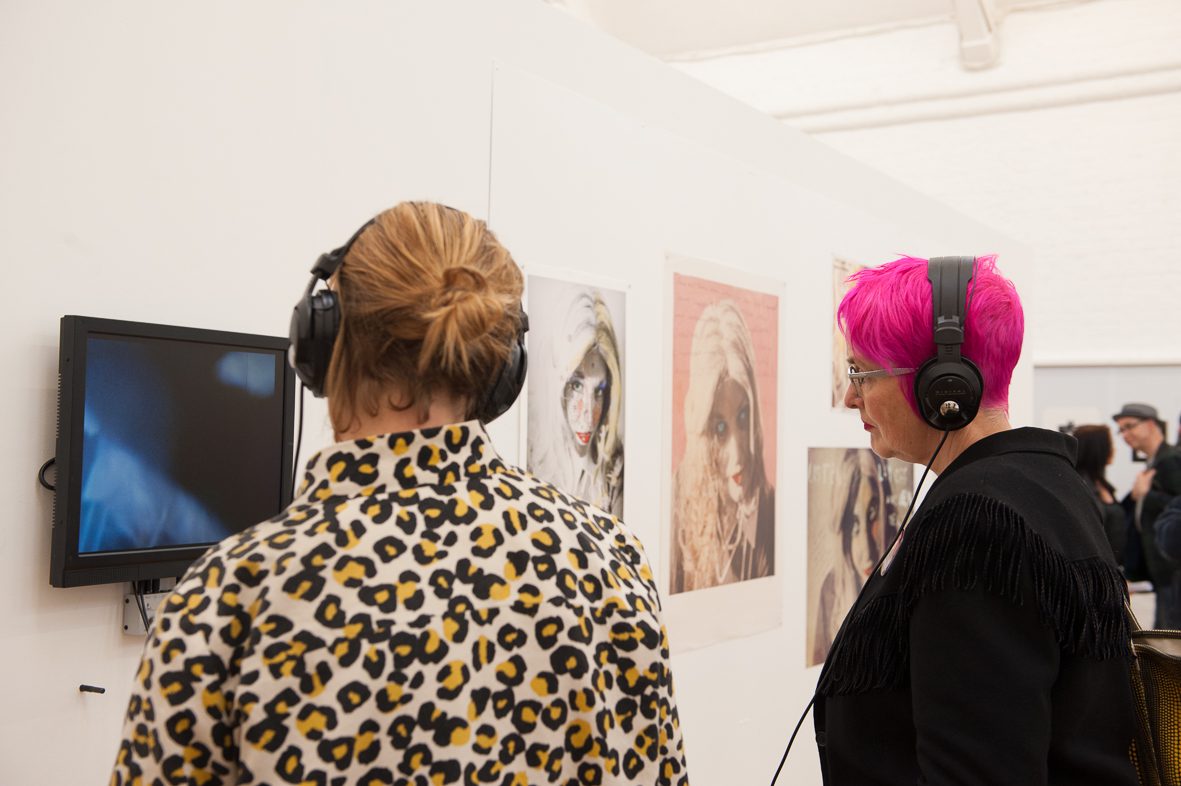Modern Art Oxford student representative volunteer Cora Salkovskis reviews Lynn Hershman Leeson’s exhibition at Modern Art Oxford.
–
Unsettling, yet oddly playful: Lynn Hershman Leeson at Modern Art Oxford
30 May – 9 August 2015
Cora Salkovskis, (Student Rep Volunteer, July 2015)
At times stark and disturbing, at others playful, this major solo exhibition of American multi-disciplinary artist Lynn Hershman Leeson delves deep into our own conceptions of identity and its intersection with technology in its varied incarnations.
Spanning decades; from her Self Portrait as a Blond, produced in 1967 and Breathing Machine IV, 1968, to the recently created The Infinity Engine (2005 – 2015), the show provides a breadth of medium which not only emphasises the startling development of the technology she anatomises, but humankind’s frequently myopic approach to its dangers and influences.
Some installations and pieces establish the viewer as an outside observer – almost a voyeur on anothers construction and deconstruction of identity. Her film Electronic Diaries (1983-88), which deliberately sets the reader apart from the wider gallery in an enclosed pseudo-cinema viewing space, is a key example of this atmosphere.
At once movingly intimate and often humorous, other screens show such pieces as Test Patterns (1979), in which a ‘test pattern man’ vaguely discusses contemporary television in philosophical aphorisms. The artist’s use of such video, heard by gallery visitors through attached headphones, serves to separate them from the outside environment whilst simultaneously establishing them as a voyeur into an artificial technological one.
As a visitor, you interact with the machine in isolation. This seems to be part of the wider point Hershman Leeson aims to convey in her installations. The wide time span provides almost a cross-section of technological development; they are presented in the space of the exhibition almost as a parade of past lovers. Indeed, Hershman Leeson makes this comparison explicitly in her video installation of Seduction of a Cyborg (1994).
Hershman Leeson’s site-specific The Infinity Engine is installed in the Piper Gallery. With an additional new commission, the film element of the work is comprised of interviews with Oxford-based scientists and University of Oxford researchers on current genetic technology; its exploration and developments. The interviews, superficially presented as in any television documentary, are darkly foreboding. Reflection on the “pandora’s box” of scientific exploration is overlayed with the eerie and lonely atmosphere created in the gallery, which has been constructed to mimic a lab.
On entering the space, a disembodied voice echoes around the room whilst a video of two lab technicians playing an oddly childish game of catch around a lab is presented. The viewer finds themselves within a sort of house of mirrors in which their distorted image is squeezed and stretched, as though disrupting our visual connection to our own, seemingly stable, identity.
This focus on sound and the disruption of sensory reality is a consistent and recurring focus of Hershman Leeson’s work. The 1973 work The Dante Hotel; a site-specific installation in a run-down hotel room of a pioneering use of sound, was perceived of as so uncomfortable that the police removed it when a suspicious guest reported it.
The exhibition at Modern Art Oxford displays some of the footage, photographs and documents, which survive from this experiment in artistic practice. Her 1965-70 Breathing Machines series similarly use sound to alarm and disconcert the viewer. Made from a wax cast of the artist’s face, with eerily lifelike eyes, Breathing Machine IV (1968) mimics life and breath, asking the viewer to come disconcertingly close to the melting face as they peer over the top of the glass case.
Against this backdrop of dark reflections on technological progress, identity and genetic science, the inclusion of Agent Ruby (1998-2002)is a brilliantly playful interlude.
Direct participation with the exhibition is encouraged, but not necessitated, as past interactions the computer which calls herself Ruby, adorn the surrounding walls. Such phraseology is inescapable, as the machine does indeed call her by name, and exhibits a degree of introspection and even humour which both alarms and amuses gallery visitors.
Her comments on human sexuality and surprisingly liberal use of the double entendre are particularly worth a look, whilst her reflections on politics and reality merit close contemplation.
Cora has just graduated with a History BA from the University of Oxford and is a volunteer Student Representative at Modern Art Oxford. For more information on student volunteering opportunities at Modern Art Oxford please contact development@modernartoxford.org.uk
